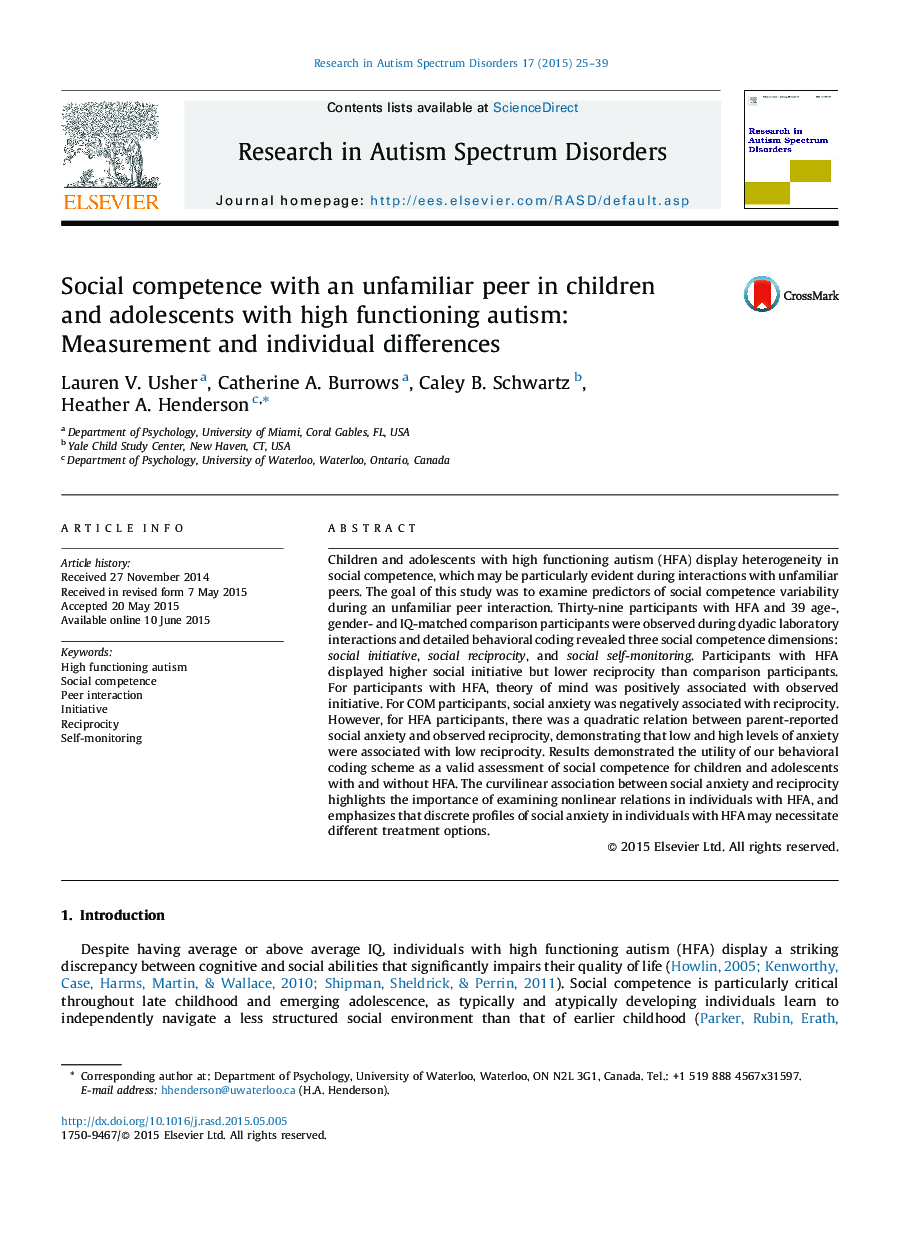| کد مقاله | کد نشریه | سال انتشار | مقاله انگلیسی | نسخه تمام متن |
|---|---|---|---|---|
| 370039 | 621837 | 2015 | 15 صفحه PDF | دانلود رایگان |
• Children with high functioning autism had higher initiative; lower reciprocity than controls.
• For participants with HFA, theory of mind was positively associated with observed initiative.
• Comparison participants’ social anxiety was negatively associated with social reciprocity.
• There was a quadratic relation between social anxiety and reciprocity for HFA participants.
Children and adolescents with high functioning autism (HFA) display heterogeneity in social competence, which may be particularly evident during interactions with unfamiliar peers. The goal of this study was to examine predictors of social competence variability during an unfamiliar peer interaction. Thirty-nine participants with HFA and 39 age-, gender- and IQ-matched comparison participants were observed during dyadic laboratory interactions and detailed behavioral coding revealed three social competence dimensions: social initiative, social reciprocity, and social self-monitoring. Participants with HFA displayed higher social initiative but lower reciprocity than comparison participants. For participants with HFA, theory of mind was positively associated with observed initiative. For COM participants, social anxiety was negatively associated with reciprocity. However, for HFA participants, there was a quadratic relation between parent-reported social anxiety and observed reciprocity, demonstrating that low and high levels of anxiety were associated with low reciprocity. Results demonstrated the utility of our behavioral coding scheme as a valid assessment of social competence for children and adolescents with and without HFA. The curvilinear association between social anxiety and reciprocity highlights the importance of examining nonlinear relations in individuals with HFA, and emphasizes that discrete profiles of social anxiety in individuals with HFA may necessitate different treatment options.
Journal: Research in Autism Spectrum Disorders - Volume 17, September 2015, Pages 25–39
